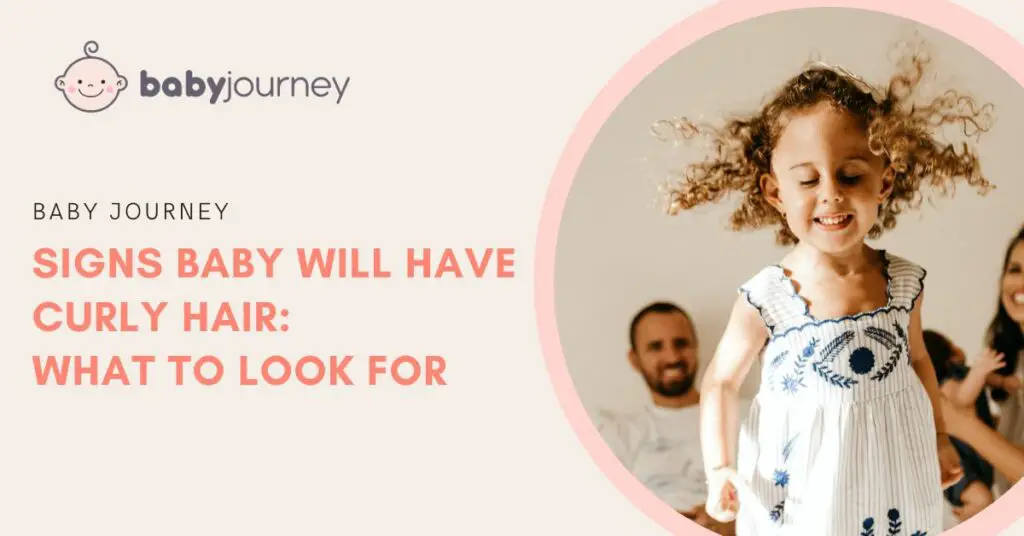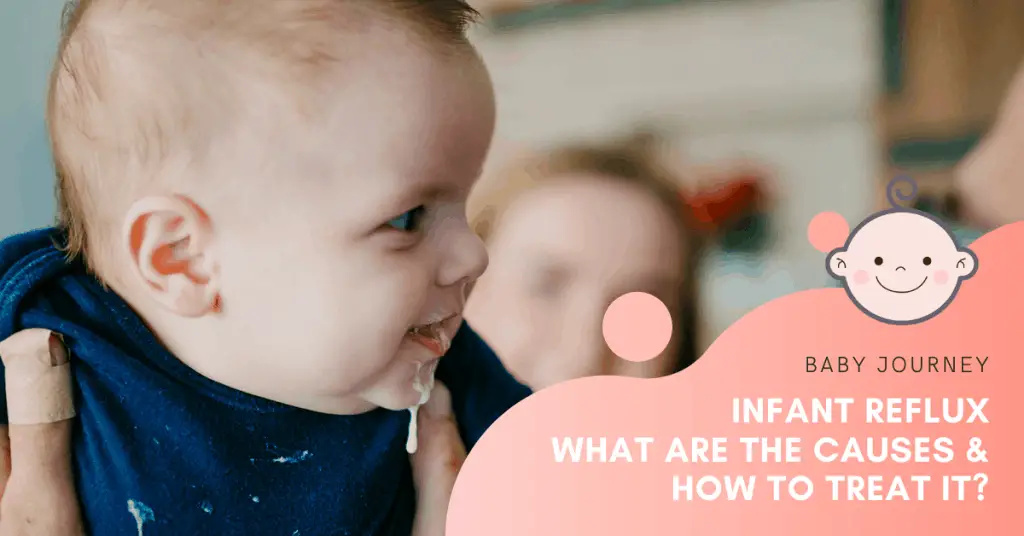Babies are born with different hair textures, and it can be challenging to predict what their hair will look like as they grow older. However, some signs can indicate that a baby will have curly hair. Curly hair is often associated with beauty and uniqueness, so it’s no wonder that many parents are curious about whether their baby will have curly locks.
One of the most significant factors that determine whether a baby will have curly hair is genetics. If both parents have curly hair, it’s highly likely that their baby will inherit curly hair genes. However, even if only one parent has curly hair, there’s still a chance that the baby will have curly hair. Other factors, such as the baby’s hair texture and environment, can also play a role in determining their hair type. In this article, we will explore some signs that indicate a baby will have curly hair and what parents can expect.
Understanding Hair Genetics
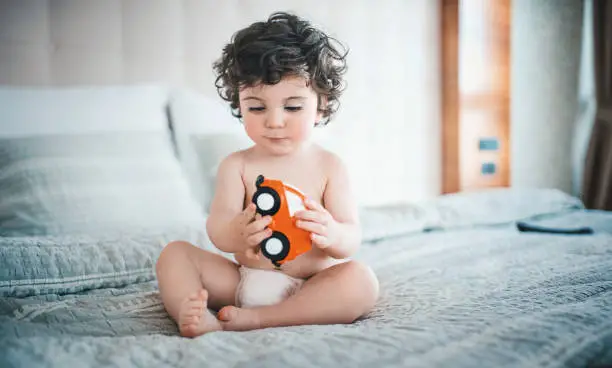
Role of Dominant and Recessive Genes
Hair texture is determined by a combination of genetic and environmental factors. The genetic makeup of an individual plays a major role in determining whether their hair will be curly or straight. The gene for curly hair is considered dominant, while the gene for straight hair is recessive. This means that if one parent has curly hair and the other has straight hair, their child is more likely to inherit the curly hair gene.
However, it is important to note that genetics is not always straightforward. Incomplete dominance can occur when an individual inherits one curly-haired gene and one straight-haired gene. This can result in wavy hair, which is a mix of both curly and straight hair.
DNA and Hair Texture
The texture of an individual’s hair is determined by the shape of the hair follicle. The shape of the follicle is determined by the DNA code that an individual inherits from their parents. The DNA code determines the shape of the hair follicle, which in turn determines the texture of the hair.
The shape of the hair follicle can be either round or oval. Individuals with round follicles tend to have curly hair, while those with oval follicles tend to have straight hair. The more oval the follicle, the straighter the hair will be.
In addition to genetics, environmental factors such as humidity, temperature, and hair care practices can also affect the texture of an individual’s hair. For example, excessive heat styling or chemical treatments can damage the hair and alter its texture.
Understanding the role of genetics in determining hair texture can help individuals better understand and care for their hair. By identifying the dominant and recessive genes that determine hair texture, individuals can make informed decisions about their hair care practices and products.
Influence of Pregnancy Hormones
During pregnancy, hormonal changes can affect a woman’s body in various ways, including hair growth and texture. The hormones estrogen and progesterone are responsible for thickening and strengthening hair. This can lead to a fuller and more luscious head of hair during pregnancy.
However, some women may experience heartburn during pregnancy, which can be a sign of increased levels of stomach acid. This acid can affect the hair follicles and lead to changes in hair texture. In some cases, this can cause hair to become frizzy or curly.
It’s important to note that not all women will experience changes in hair texture during pregnancy. The influence of hormones on hair growth and texture can vary from person to person. Additionally, these changes may not be permanent and can return to normal after pregnancy.
In summary, hormonal changes during pregnancy can influence hair growth and texture. While some women may experience changes in hair texture, others may not notice any difference. It’s important to remember that these changes are normal and not a cause for concern.
Stages of Baby Hair Growth
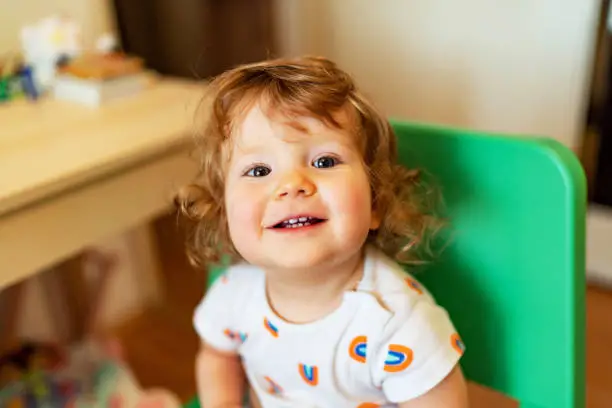
Babies are born with a fine, downy hair called lanugo that covers their body. This hair is shed within the first few weeks of life, and a new type of hair growth begins.
During the first few months, the hair that grows in is called vellus hair. This hair is soft, fine, and barely visible. It covers the entire body and is typically lighter in color than the hair that will grow in later.
Around six months of age, the hair on a baby’s head starts to thicken and grow longer. This is when terminal hair growth begins. Terminal hair is thicker and darker than vellus hair, and it is the type of hair that will remain throughout a person’s life.
Babies’ hair growth can vary widely. Some babies are born with a full head of hair, while others may not have much hair at all. Hair growth patterns can also change over time. For example, a baby who is born with straight hair may develop curly hair as they grow older.
It is important to note that hair growth is not always consistent. Some babies may experience periods of rapid hair growth, while others may have slower growth. Hair growth can also be affected by factors such as nutrition, genetics, and overall health.
Overall, understanding the stages of baby hair growth can help parents to better understand their baby’s hair and how it may change over time.
Identifying Hair Types and Textures

Hair texture is determined by the shape and size of the hair follicle. The shape of the follicle can be round, oval, or flat, and the size can be small, medium, or large. These factors determine whether the hair is straight, wavy, or curly.
Straight, wavy, curly, and coily hair are among the various hair types and textures. Straight hair is smooth and free of curls and waves. Wavy hair is somewhat curved and has loose, relaxed waves. Curly hair has a defined S-shaped or spiral curl pattern, and coily hair has a tight, zigzag curl pattern.
Hair texture can also change over time. For example, a baby may be born with straight hair, but as they grow older, their hair may become wavy or curly. Hair texture can also be affected by external factors such as humidity and temperature.
Frizziness is another factor that can affect hair texture. Frizzy hair is caused by a lack of moisture, which causes the hair to become dry and brittle. This can lead to breakage and split ends.
Identifying a baby’s hair type and texture can be challenging, as babies’ hair can change as they grow older. However, there are some signs that can indicate whether a baby will have curly or straight hair. These signs include:
- Genetics: If one or both parents have curly hair, there is a higher chance that the baby will have curly hair as well.
- Hair texture: If the baby’s hair has a defined curl pattern or is wavy, there is a higher chance that the baby will have curly hair.
- Frizziness: If the baby’s hair is prone to frizziness, there is a higher chance that the baby will have curly hair.
It is important to note that natural hair comes in many different textures and patterns, and there is no one “right” or “wrong” hair type. It is important to embrace and care for your baby’s natural hair, no matter what texture or pattern it may be.
Environmental Factors Affecting Hair Type
Apart from genetics, environmental factors can also play a role in determining a baby’s hair type. Here are some of the environmental factors that can affect hair type:
Climate
The climate in which a baby lives can affect their hair type. For example, babies living in hot and humid climates may have curlier hair than those living in cooler and drier climates. This is because humidity can cause hair to absorb moisture, which can result in curls and waves.
Environmental Pollution
Environmental pollution can also affect a baby’s hair type. Exposure to pollutants such as cigarette smoke, car exhaust, and industrial chemicals can damage hair follicles, resulting in weaker and more brittle hair.
Humidity
Humidity can also play a role in determining a baby’s hair type. High humidity can cause hair to absorb moisture, resulting in curls and waves. On the other hand, low humidity can cause hair to become dry and brittle, resulting in straighter hair.
Hair Care
The way a baby’s hair is cared for can also affect their hair type.Using harsh shampoos, for example, or washing hair too frequently, can strip the hair of its natural oils, resulting in dry, brittle hair.On the other hand, using gentle shampoos and conditioning treatments can help to keep hair healthy and strong.
Diet
A baby’s diet can also affect their hair type. Eating a diet rich in vitamins and minerals, such as vitamin A, vitamin C, and biotin, can help to promote healthy hair growth. On the other hand, a diet lacking in essential nutrients can result in weaker and more brittle hair.
In conclusion, while genetics play a major role in determining a baby’s hair type, environmental factors can also play a role. Climate, environmental pollution, humidity, hair care, and diet can all affect a baby’s hair type. It is important to take these factors into consideration when caring for a baby’s hair to ensure that it remains healthy and strong.
Physical Changes Indicating Curly Hair
There are several physical changes that can indicate a baby will have curly hair. While genetics plays a significant role in determining hair texture, there are some physical traits that can suggest the possibility of curly hair.
One physical change is a thick and dense scalp. Curly hair tends to be thicker and more voluminous than straight hair, so a baby with a thick scalp may have curly hair. Additionally, curly hair tends to be more prone to tangles, so if a baby’s hair is difficult to part, this could also be an indication of curly hair.
Another physical change that can indicate curly hair is the presence of frizz. Frizzy hair is often a sign of curly hair, as the hair shaft tends to be more irregular in shape, causing it to curl and kink more easily. In some cases, a baby’s hair may even dry in a loop, which is a strong indicator of curly hair.
It’s also worth noting that heartburn during pregnancy has long been associated with curly hair in babies. While this is largely considered an old wives’ tale, there may be some truth to it. According to a report conducted at the John Hopkins Institute, there may be a link between heartburn during pregnancy and the likelihood of a baby having curly hair.
In summary, while genetics is the primary determinant of hair texture, there are several physical changes that can indicate a baby will have curly hair. These include a thick and dense scalp, difficult-to-part hair, frizz, and heartburn during pregnancy.
Ethnicity and Hair Type

Hair type is largely determined by genetics, including ethnicity. People of different ethnicities have different hair types, which can range from straight to curly. In general, people of African descent tend to have the curliest hair, while people of Asian descent tend to have the straightest hair. Caucasians fall somewhere in between, with a range of hair types that can include straight, wavy, and curly.
African American hair is often referred to as “kinky” or “coily” because of its tight curls. This type of hair is often prone to dryness and breakage, which can make it difficult to manage. However, with the right care and styling, African American hair can be healthy and beautiful.
Asian hair, on the other hand, is typically straight and thick. This type of hair is often very strong and resistant to damage, but it can be difficult to style because it tends to be very heavy and doesn’t hold curls well.
Caucasian hair is the most diverse of the three ethnicities, with a range of hair types that can include straight, wavy, and curly. People of European descent often have hair that is fine and thin, which can make it prone to breakage. However, with the right care and styling, Caucasian hair can be healthy and beautiful.
It’s important to note that these are generalizations, and there is a lot of variation within each ethnicity. For example, some African Americans may have hair that is less curly, and some Asians may have hair that is more wavy. Additionally, hair type can be influenced by factors such as age, hormonal changes, and environmental factors.
Hair Care for Babies and Toddlers
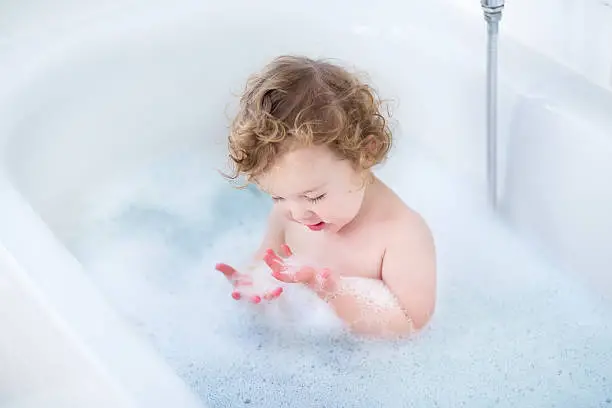
Babies and toddlers with curly hair require special hair care to keep their curls healthy and beautiful. Here are some tips to help parents care for their little one’s curly hair.
Hair Products
Choosing the right hair products is essential for curly hair care. Look for products that are specifically formulated for babies and toddlers with curly hair. These products are gentle and won’t strip the hair of its natural oils. Avoid using adult hair products as they may contain harsh chemicals that can damage the hair.
Haircut
Regular haircuts are important for curly hair. Trimming the hair regularly helps to prevent split ends and breakage. It also helps to keep the hair looking neat and tidy. It is recommended to get a haircut every 8-12 weeks.
Hair Care Tips
Here are some hair care tips for babies and toddlers with curly hair:
- Use a wide-tooth comb or brush to detangle the hair. Start at the ends and work your way up to the roots.
- Avoid brushing the hair when it is dry as this can cause breakage.
- Use a leave-in conditioner to help moisturize the hair and keep the curls defined.
- Use a satin pillowcase or bonnet to prevent the hair from becoming tangled while sleeping.
Shower
When it comes to showering, it is important to use lukewarm water as hot water can dry out the hair and scalp. Use a gentle shampoo to avoid stripping the hair of its natural oils. It is recommended to wash the hair every 2-3 days.
Cradle Cap
Cradle cap is a common condition that affects babies. It is characterized by scaly patches on the scalp. To treat cradle cap, apply a small amount of baby oil or petroleum jelly to the affected area. Use a soft-bristled brush to gently massage the scalp and remove the scales.
By following these hair care tips, parents can help their little ones maintain healthy and beautiful curls.
Conclusion
In conclusion, there are several signs that a baby will have curly hair. While genetics play a significant role, environmental factors, hair texture, and frizziness can also indicate the likelihood of curly hair. It is important to note that not all babies who exhibit these signs will have curly hair, and some babies with straight hair may also exhibit these signs.
Parents should not rely solely on the signs to predict their baby’s hair type. Instead, they should embrace their baby’s unique hair and focus on providing proper care and nourishment. Regular hair washing, moisturizing, and gentle detangling can help maintain healthy hair, regardless of texture.
It’s also worth noting that curly hair is more prone to dryness and breakage. To keep curls defined and healthy, parents can use products created specifically for curly hair, such as leave-in conditioners and curl-enhancing lotions.
Overall, while the signs of curly hair can be exciting, it is important to remember that hair type is just one aspect of a baby’s unique identity. Parents should celebrate their baby’s individuality and embrace all aspects of their appearance, including their hair.
Frequently Asked Questions
Will my baby’s hair texture change as they grow?
Yes, it’s common for a baby’s hair texture to change as they grow. By 14 weeks of pregnancy, hair follicles begin to grow deep inside the skin, and by 20 weeks, fine downy hair begins to emerge from these follicles on the brows, upper lip, and chin. Hair texture changes during childhood, and it is fairly uncommon for newborns born with straight hair to develop curls as they grow older.
What are some signs that a baby will have curly hair?
There are several signs that may indicate a baby will have curly hair. These include:
- Hair that dries in a loop
- Frizziness or flyaways
- Hair that is difficult to style
- Loops that form while hair air-dries
Can a baby’s hair texture change from curly to straight?
Yes, a baby’s hair texture can change from curly to straight. Hair texture can be influenced by genetics, hormones, and environmental factors. It’s not uncommon for a baby’s hair texture to change several times throughout their childhood.
What factors determine a baby’s hair texture?
Several factors can determine a baby’s hair texture, including genetics, hormones, and environmental factors. Genetics play a significant role in determining hair texture, and babies with parents who have curly hair are more likely to have curly hair themselves.
How can I enhance my baby’s natural curls?
To enhance your baby’s natural curls, you can use a wide-tooth comb or a soft brush to detangle their hair gently. You can also use a leave-in conditioner or a curl-enhancing product designed for babies. Avoid using heat styling tools or harsh chemicals on your baby’s hair.
What are some tips for caring for a baby’s curly hair?
When caring for a baby’s curly hair, it’s essential to use gentle, sulfate-free shampoo and conditioner. You should also avoid using hot water when washing their hair, as this can strip the hair of its natural oils. Detangle their hair gently using a wide-tooth comb or soft brush, and avoid using heat styling equipment or harsh chemicals.


